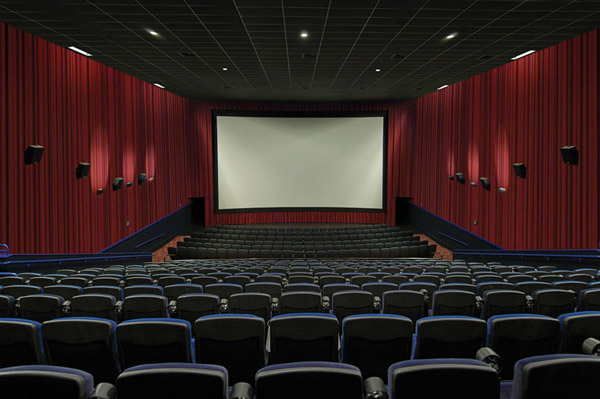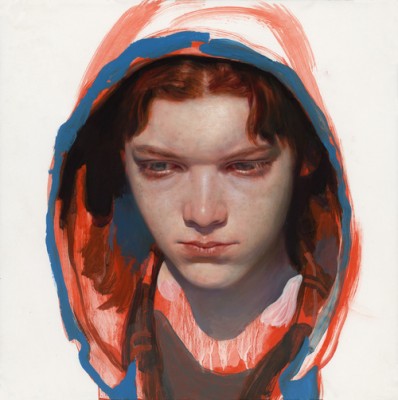
What: An interactive film shot through the front-facing cameras of laptops and cell phones held by the actors. Audience members navigate through these perspectives inside a 3D VR environment
Some Thoughts
This year, Sundance ushered in a game-changing moment when it declared one of the festival’s best films to be a budgetless feature shot entirely with an iPhone camera. It prompted award-winning director Mark Duplass to deliver an inspiring speech at SXSW, declaring that anyone with a cellphone is now capable of creating a quality film, and, for the first time, filmmakers have all the resources they need to make artistically ambitious work without having to pander to investors. This has tremendous implications for the film industry, and is, of course, very, very new. Within the last 5 years, laptops, tablets and cell phones with high-quality cameras have become ubiquitous, and it’s exciting to think how this uniquely equips the 21st century filmmaker to explore their medium in new and evocative ways. Truly, it is an exciting time to be a film director.
I am not a film director. Not even close My background is entirely in stage drama, and, unlike filmmakers, we theatre artists have every reason to be afraid of cell phones. Regional theaters are dying as they struggle to attract young audiences, and there are many who claim that “screens” are to blame; the YOLO generation simply can’t sit through a 7-hour production of Angels in America without yearning for their phones, and the world of the stage fails to form a relationship with its audience that has the same power and intimacy as video games or social media. As drama students, we’re told that it’s our responsibility to “fix” things for our generation, but the solutions we come up with can often feel a little heavy-handed. Many theaters have begrudgingly installed “tweet-seats”, sections “reserved for those sad souls who simply can’t spend a nanosecond away from their smartphones”; “new media” plays try to incorporate phones into the plays themselves, urging audience members to text instructions to actors or spotlights. It’s different, sure, but in the end, such attempts at working with screens are still a concession, and it hardly feels like we’re doing great art. While my colleagues and I believe that the theatre remains a powerful and important platform, it’s a tough sell so long as our efforts continue to be at odds with some of the decade’s most influential inventions.
So why hasn’t the theatre had a Sundance moment? Why are theatre artists struggling to adapt to a breed of tech that actively enables the creation and consumption of media? The answer (well, one answer) has to do with what makes the stage unique as a platform. A professor explained to me once that, in order for something to be theatre, actors and audience members all need to be actively aware of each other’s presence in the same space. Anything that records and delivers an identical experience to every patron would lack the changeability of live theatre, and would sever the viewer’s relationship with the performance. In addition, there’s something powerful about being part of an audience, participating in shared, reactive experience and yet viewing the action from a vantage point that is unique to you and you alone. This is what makes the theatre unique from film, television and performance art (which, while also performed live in front of an audience, is made by visual artists and, as such, tends to lack the same quality of principle). It’s hard, then, to find a place for tablets and mobile phone screens, which tend to sever these kinds of connections, delivering a uniform perspective to a “userbase” that might view it months and miles away from one another. At the end of the day, while what smart phones have to offer may be compelling, nothing they create is going to be theatre.
With this in mind, I have a feeling that what I’m proposing is going to break a lot of rules. I’m not going to try very hard to make it indistinguishable from film or other kinds of storytelling, and it might be valid to say at the end that what I’ve made isn’t really theatre. That being said, I’m approaching this project from the perspective of a theatre artist, and will address what I, as a theatre artist, find compelling and worthy of exploration. The end goal, I guess, is to deliver an experience that makes bold use of “screen” technologies and isn’t derailed by the realities of life in 2015.
The Proposal Part
Screens
I find it’s interesting to think that so many of our laptops and tablets and such have front-facing cameras and that, as a result, we end up spending a lot of our day staring directly into a camera. Plenty of people are already aware of this reality, and find it horrifying — after all, you can’t really be sure you aren’t being watched. I like to think part of what makes this possibility so scary is how complete a voyeur’s picture of us would be, how much they could glean just by seeing our lives as our cell phones do. With this in mind, I plan to tell a story through these moments, filming a scene through cell phones and tablets that the characters are using, and making use of the font-facing cameras that are already naturally distributed around a room.
The ability to seamlessly record numerous perspectives of the same scene at once is unusual, and uniquely enables a story to be told from any number of valid vantage points. I want to allow the audience member to navigate through the many camera angles and choose how they view the story. I don’t want this to be lazy cinematography. Ideally, the result would be reminiscent of Sleep No More, and each of the separate vantage points would manage to tell a rich and distinct story using the same scene.
Story
I think the choice of story is going to very important, and I haven’t come up with an idea I really like. I want a scene where it makes sense for characters to be looking into cell phones and laptops, for them to interact with others in the process, and to have a compelling action that makes a story take place and each perspective differently compelling. Some boring ideas I’ve come up with are the following:

Family Gathering: I think it’d be interesting to paint a portrait of a “family” across rooms in a home. Age ranges are hard to find at a university, so maybe this “family” looks more like college roommates or childhood friends or some kind of forced gathering of peers. In any case, I can imagine a very plausible scene that depicts friends on cell phones/laptops in the living room, someone staring at their cell phone in the bathroom, another using their desktop alone in their office. I suspect the scene would focus on selective knowledge, sharing some screens with others in a public space, and then changing rooms to in order to gain privacy.

Bus/Subway The bus is a clear, easily replicated setting that maybe 90% of people spend on cell phones. Riders end up sitting next to people they’re close to, people they’re trying to avoid, complete strangers, etc. People on the bus are weird, and there’s a lot of potential for interesting interactions. I like the idea of depicting a group of people on the subway as they all receive word via online news that an enormous tragedy has occurred. I think watching people react to this news simultaneously in a public space would be an interesting, uniquely modern experience.

CMU Computer Cluster The GHC3k cluster just got remodeled; it now has a bunch of circular desk islands hosting Mac desktops, each of which has a front-facing webcam. This offers a lot of perspectives in this room, and has a lot of potential for capturing the kind of a story that gets told in my own world as a CS student. I can see a play in which characters are seen through desktops, laptops, cell phones, either during a busy day or late at night. These clusters have been the setting of some of the most emotionally-complicated moments I’ve witnessed at CMU, and there is probably a lot of stories to be told about tragedy, loneliness and mental illness.
VR Navigation
One common pitfall of interactive cinema is the interface; it’s hard to give the user an interface that allows them them both to easily view a film and simultaneously navigate through a wide variety of shots — indeed, I needed to come up with a similar setup for some of my research, and found there wasn’t really a screen configuration I like. I need a way for the audience to explore their options without it distracting them from the content.
I’m starting to think that the solution might lie in virtual reality. Full disclosure: I really want the answer to lie in virtual reality. I’m doing VR work over the summer, and one of my goals for the project has always been to incorporate a VR headset, even though I don’t really do game design, animation, 3D modeling or anything that would warrant it. That aside, it is the case that virtual reality allows us to create really fanciful, reality-defying 3D spaces, and in turn allows us to imagine user interfaces that wouldn’t be possible on a screen or in a physical space. A couple ideas I had for the space are the following:

Museum: user walks through a series of open rooms, each containing a mini-cinema showing a camera angle

Batman: users enter a “menu” room with a massive number of screens. Selection of a screen projects it onto a wall of the opposite side of the room.

Weird, Implausible Cinema users sit in the audience of a movie theatre, where each wall shows one or more perspective of the film. Users can then select a wall to move it in front of their view. This room may be a polygon many, many sides. The “main” wall might grow to occupy the user’s view.
The big thing that all my ideas have in common is the user watching a 2D film, cinema-style, in a 3D space. It’s worth noting that VR is still young, and many are saying that the movie theater is one of the most effective experiences we’ve been able to replicate in VR. I think this experience, while simple, would be very effective in this kind of environment, and would be a valid exploration of what VR is really good at.
Research and Resources
In doing my research, I came across a couple groups and people with information that seemed at least somewhat relevant to what I am aiming to do. At the ETC, for instance, there was a Spring project group working on “VR Cinema” — creating live-action cinema for the Rift in an effort to determine what moments would be emotionally evocative as a VR experience. In speaking with them, I learned that a few things. One, they gave me a proof-of-concept that you can have decently high-latency live-action footage in the rift. They actually used several cameras to stitch a panorama together, making the screen immersive. This isn’t what I’m aiming to do, but it demonstrated that you could synchronize multiple perspectives of the same scene at once. This was useful information.
I also talked to my directing advisor, Greg Lehane, about the problem of creating theatre on new platforms. He agreed that it is very difficult for mixed-media performances to remain a theatrical investigation. However, he did give me a piece of philosophy to work with: simplify and amplify. This means, find a small moment, something that can establish intimacy with an audience IE “the conversation after the condom breaks” — and amplify it, give the emotions of that small moment a lot of attention. This gave me a lot of insight into what sort of stories I should be trying to tell in my performance.
Finally, I talked to one of my classmates, who’s done extensive development in Unity, who told me some cautionary tales of working with video textures. He said that real-time video would all get stored in program memory, and that it might be hard to run more than 10 videos at once. He also said that loading these videos would take several minutes during the compilation process. Finally, he informed me that using textures would require Unity Pro. I’m interested to see if his experiences with video limitations prove to be true: if so, not all is lost. I can image instances in all of the setups I’ve planned that could cull pretty heavily, making it so that no more than 10 videos are in view at any given time, but to give the appearance of a massive array of them. It’s also possible that, if my task proves too much, that I represent the angles in some way other than having the user preview their footage (showing a map with their placement in the set, for instance). Both of these would do nothing to detract from my plans.
Currently, one of my tasks is finding access to Unity Pro. I have some ideas — let’s see if they work
Another one of my tasks is coming up with my script. I think I like the idea of a group of college-aged friends gathering in a house. Maybe CMU’s carnival would make for a good setting. I’ve written some drafts, but none have a story I really like. I think I’m going to ask around a bit and see if anyone has a story inspiration that would be good to put on this platform.













